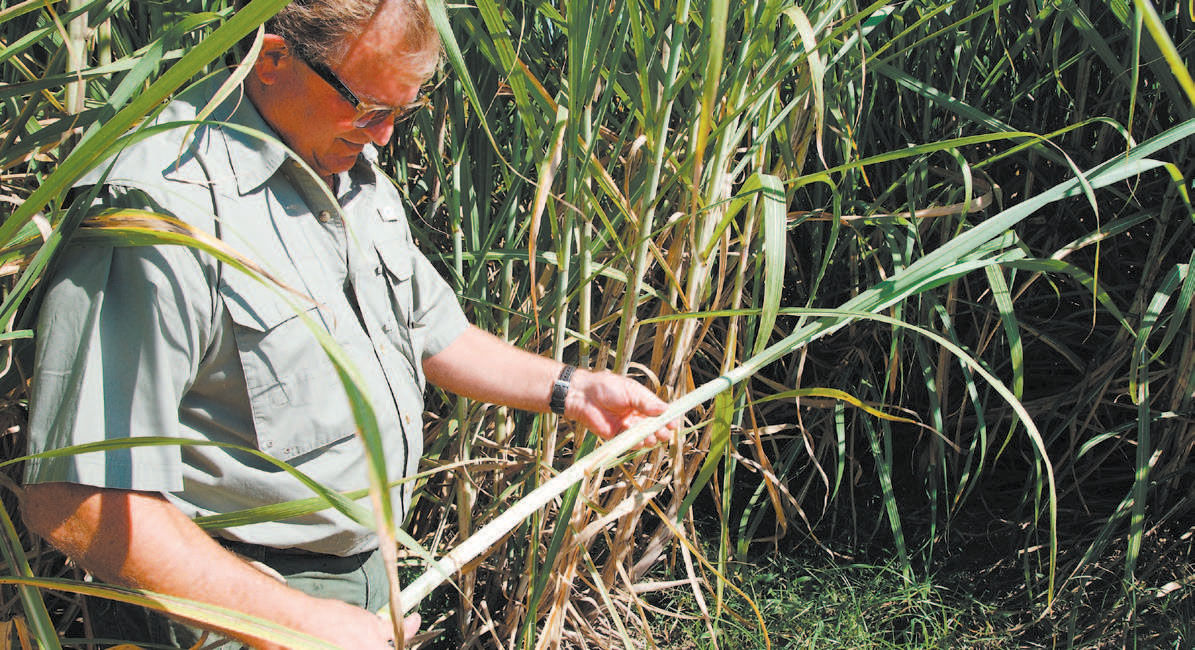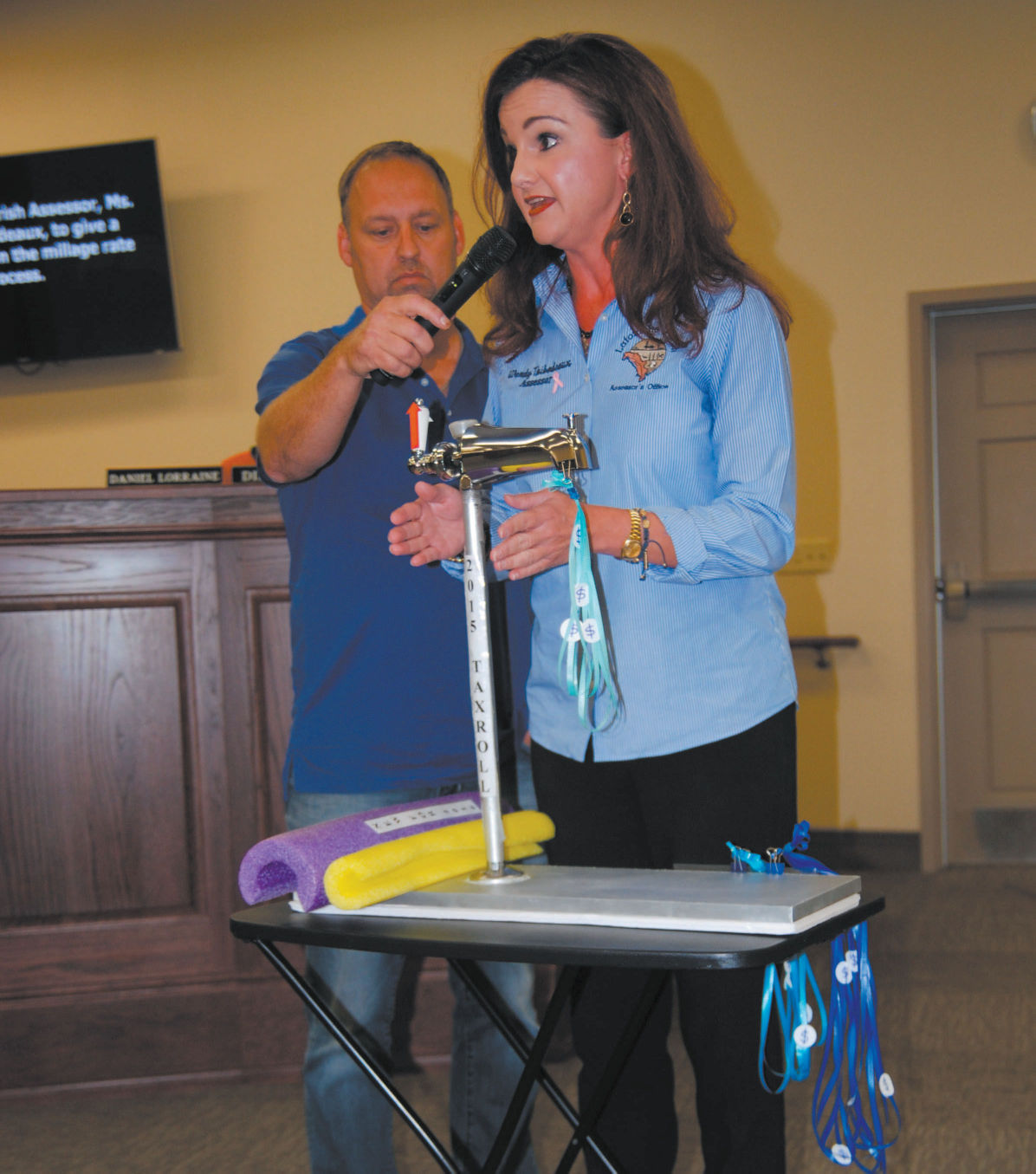
Sugar yielding high content, low crop weight
October 21, 2015
Chatman honored by peers
October 21, 2015Lafourche Parish Assessor Wendy Thibodeaux is urging all of the parish’s individual agencies to lower their property tax rates in order to ensure the parish’s economic viability
The way she’s doing that is through a creative and eye-opening presentation, which she gave to the Lafourche Parish Council during their Oct. 13 meeting.
Lafourche has the third highest property tax rate of the 11 coastal parishes in Louisiana and the amount of money it has collected has grown 237 percent from 2000 to 2014.
According to a Louisiana Tax Commission report, Lafourche Parish had the 12th highest millage rate out of the state’s 64 parishes in 2014.
That startling fact has led Thibodeaux on a campaign to inform the myriad government and quasi-governmental agencies that collect property taxes that they may be stifling economic growth in the parish through overzealous taxation.
According to Thibodeaux, Lafourche collects a total of 131.93 mills from homeowners, businesses, and most critically for the parish, offshore vessels that moor their ships in parish waters.
A mill is a $1 tax on every $1,000 in assessed property value. Personal homes’ assessed property value is 10 percent of the fair market value after subtracting the Homestead Exemption. For example, if the tax rate is 150 mills and total assessed value is $10,000 with no exemptions, the taxes would be calculated as $10,000 x .150 = $1,500.00.
There are 58 separate taxing bodies that collect property taxes to pay for everything from juvenile justice to parish recreation, Road District 1 to the school district, and parish drainage to levees.
Thibodeaux said she is visiting them all.
Voters approve millage rates during elections. Property values across the parish are reassessed every four years, which includes commercial property, as mandated by law. Homes get assessed yearly. Property values normally rise each year, so state law requires taxing agencies to “roll down” the millage rate so that they only collect as much as they collected before the reassessment.
The amount of millage is then adjusted up or down to satisfy the law. If the millage is lowered because of an increase in property values, it may be “rolled up” to the prior year’s millage after a public hearing and approval by a two-thirds vote of the taxing authority. Districts can choose a rate between reduced one and the maximum that voters approved.
But in Lafourche, all of the districts are charging either the minimum or the maximum millage that they can, Thibodeaux told the council. Not one district’s millage rate falls in between. That practice is what she says is far too commonplace in Lafourche.
“Say a fire district needs to buy a new truck,” Thibodeaux explained to the council. “That’s what this process is for with millage rates. People elect these millage rates because they want these districts to run.”
The hypothetical fire truck may cost the fire district $200,000, but the rolled up millage generates an extra $500,000.
“If you need a new fire truck and it costs $200,000, levy the millage rate so that you generate $200,000,” she said. “Don’t levy your millage rate to generate $500,000, buy the truck for $200,000 and put $300,000 in your surplus.”
The parish collected a total of $123.6 million in property taxes last year from more than $990 million in taxable assessed property.
“This year, we crossed over the billion-dollar mark,” Thibodeaux told the council.
The reason is because property values generally increase over time and new properties are added to the tax rolls during reassessment. Thibodeaux explained that districts will still collect more in taxes each year whether or not they maintain the maximum rates.
She used her own taxing agency, the Lafourche Parish Assessment District, as an example. The maximum millage rate her office can charge property owners is 2.5 mills.
In 2011, the assessor’s office collected more than $1.8 million by charging the max millage. The following year, 2012, was a reassessment year, which increased the pool of property value the parish could tax, so the millage rate was rolled down to 2.47 mills to compensate for that.
The assessor’s office still collected $120,538 more despite the lowered rate. The process was repeated over the following two years with even more of an increase.
Thibodeaux explained that adding to the tax roll generates more revenue than raising the millage rate. She said the tax roll increases between seven to 12 percent each year on average.
“That’s what I’m trying to demonstrate here today,” Thibodeaux told councilmembers. “There is a gray area and that there is a way that we could be more responsible with this millage rate.”
Councilman Phillip Gouaux said the parish council had paid Nicholls State University to study the high millage rates in Lafourche many years ago and that the university had similar findings.
He said even if parish officials did not know that 2016 was going to be a year of economic stagnation due to low oil prices, “We still owe it to the businesses to reduce as much millage as possible and try to utilize their money more efficiently.”
Thibodeaux said the high millage rates in Lafourche threaten to drive away businesses.
Councilman Daniel Lorraine said some large companies have already left Lafourche for Terrebonne Parish, where the millage rate is lower by 20 mills.
“Business is important to us and if we don’t be careful and walk a fine line and treat them fair, them boats are going to go and other businesses are going to locate out of Lafourche Parish,” said Councilman Michael Delatte… But you can only increase [millages] so much before people start leaving.”
Lafourche Parish Assessor Wendy Thibodeaux explains to the parish council why property tax rates in the parish don’t need to be as high to fund local government using a homemade instructional tool fashioned from a faucet. The size of the pipe represents the amount of taxable property, the valve represents the millage rate and the water represents collected property taxes.









